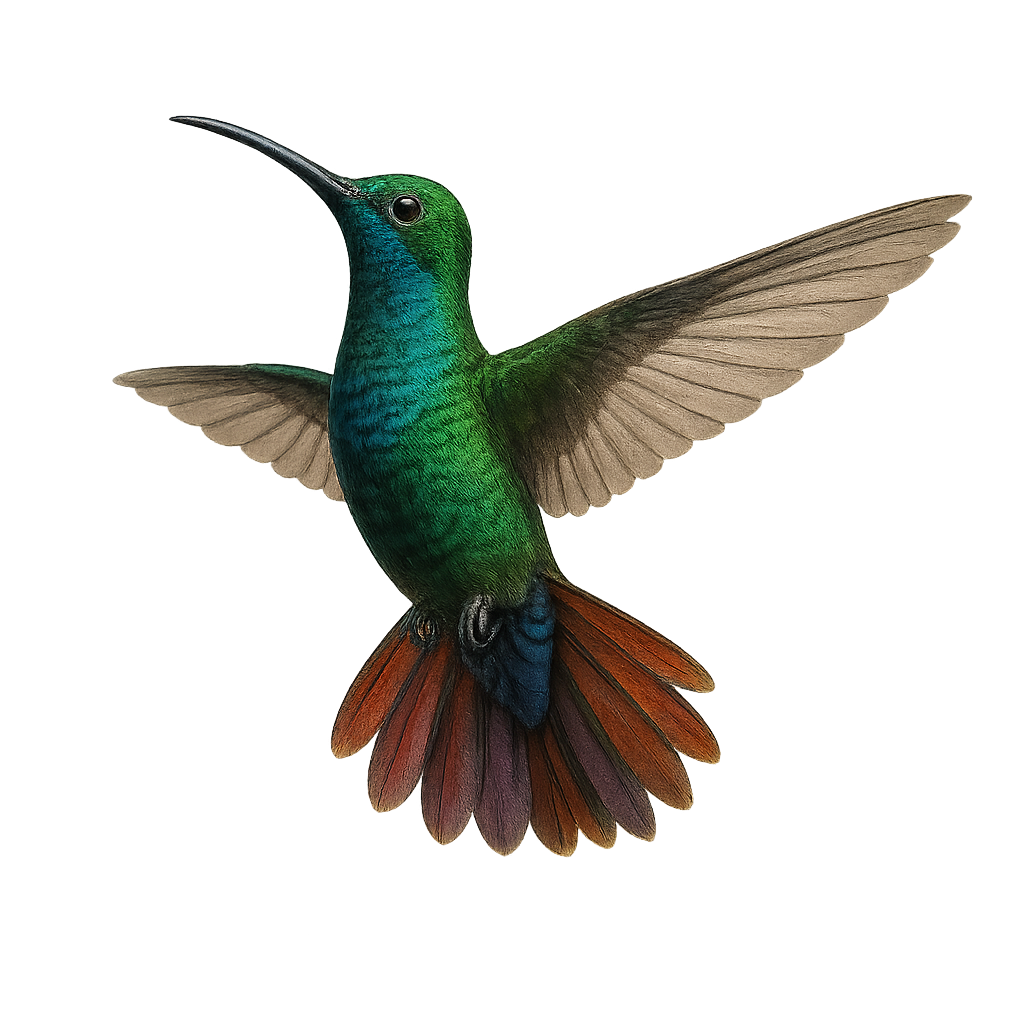Your wildlife photography guide.
Explore the green-throated mango in detail, study its behavior, prepare your shots.
Where to observe and photograph the green-throated mango in the wild
Learn where and when to spot the green-throated mango in the wild, how to identify the species based on distinctive features, and what natural environments it inhabits. The WildlifePhotographer app offers tailored photography tips that reflect the green-throated mango’s behavior, helping you capture better wildlife images. Explore the full species profile for key information including description, habitat, active periods, and approach techniques.
Green-throated Mango
Scientific name: Anthracothorax viridigula

IUCN Status: Least Concern
Family: TROCHILIDAE
Group: Birds
Sensitivity to human approach: Suspicious
Minimum approach distance: 5 m
Courtship display: October to November
Incubation: 16-18 jours
Hatchings: October to December
Habitat:
Tropical rainforests, mangroves, open wooded areas
Activity period :
Primarily active during the day, with peak activity in the morning and late afternoon.
Identification and description:
The Green-throated Mango is a medium-sized hummingbird known for its iridescent emerald green throat and metallic plumage. It primarily inhabits tropical rainforests, mangroves, and open wooded areas in South America, particularly in Guyana, Brazil, and Venezuela. This hummingbird is often seen hovering around flowers to feed on nectar, playing a crucial role in pollination. It can also catch small insects in flight to supplement its diet. Although its habitat is threatened by deforestation, it remains relatively common within its range.
Recommended lens:
400 mm – adjust based on distance, desired framing (portrait or habitat), and approach conditions.
Photography tips:
To photograph the Green-throated Mango, focus on areas with abundant flowers, as it often feeds there. Use a 400mm lens or longer to capture precise details of its iridescent plumage. Be patient and discreet, as it is suspicious but can get used to your presence if you remain still. Early morning hours are ideal for soft light that enhances its vibrant colors.
The WildlifePhotographer App is coming soon!
Be the first to explore the best nature spots, track rutting seasons, log your observations, and observe more wildlife.
Already 1 432 wildlife lovers subscribed worldwide

